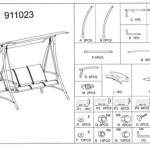Latch Lever for Patio Door
A latch lever is an essential component of a patio door, allowing you to open and close it with ease. It is typically located on the inside of the door and is operated by a handle or knob. When the handle is turned, the latch lever engages with a strike plate on the door frame, securing the door in place. When the handle is turned again, the latch lever releases the strike plate, allowing the door to be opened.
Types of Latch Levers
There are two main types of latch levers: spring-loaded and gravity-operated. Spring-loaded latch levers use a spring to keep the latch engaged with the strike plate. This type of latch lever is typically used on doors that are frequently opened and closed, as the spring provides a positive engagement between the latch and the strike plate. Gravity-operated latch levers rely on the force of gravity to keep the latch engaged with the strike plate. This type of latch lever is typically used on doors that are not opened as frequently, as the force of gravity is less likely to disengage the latch from the strike plate.
Choosing the Right Latch Lever
When choosing a latch lever for your patio door, it is important to consider the following factors: - The frequency of use: If the door will be opened and closed frequently, a spring-loaded latch lever is a good choice. - The weight of the door: A heavier door will require a stronger latch lever. - The style of the door: The latch lever should complement the style of the door.
Installing a Latch Lever
Installing a latch lever is a relatively simple process that can be completed in a few minutes. The following steps will provide you with general guidance on how to install a latch lever: - Remove the old latch lever: Using a screwdriver, remove the screws that are holding the old latch lever in place. Once the screws are removed, the latch lever can be pulled out of the door. - Install the new latch lever: Place the new latch lever in the hole in the door. Make sure that the latch lever is oriented correctly, with the handle or knob facing the inside of the door. Insert the screws that came with the new latch lever and tighten them until the latch lever is securely in place. - Test the latch lever: Open and close the door to make sure that the latch lever is working properly. The latch should engage with the strike plate when the door is closed and release the strike plate when the door is opened.
Troubleshooting Latch Lever Problems
If you are having problems with your latch lever, there are a few things you can check: - Make sure that the latch lever is properly installed: If the latch lever is not installed correctly, it may not be able to engage with the strike plate. - Check the strike plate for damage: If the strike plate is damaged, it may not be able to hold the latch lever in place. - Lubricate the latch lever: If the latch lever is not moving smoothly, it may need to be lubricated.
Conclusion
A latch lever is an essential component of a patio door, providing a secure and easy way to open and close the door. By understanding the different types of latch levers and how to install and troubleshoot them, you can keep your patio door functioning properly for years to come.

Mortise Type A Position Centered Latch Lever Keyed Sliding Glass Patio Door Handle Set

82 225 Sliding Patio Door Internal Lever Lock Swisco Com

82 240 Roto Multi Point Mortise Latch Lever Swisco Com

Sliding Patio Door Latch Lever For Milgard White Ebay

82 106 Sliding Door Turning Lever Swisco Com

Prime Line Sliding Door Latch Lever 1 3 8 In Tail White Finish E 2703

Latch Lever And Escutcheon Plate For Sliding Patio Door With Diecast

82 100 Thumb Latch Lever Escutcheon Plate Swisco Com

Sliding Glass Patio Door Handle Kit With Mortise Lock And Keepers A Position Centered Latch Lever Brushed Chrome Keyed Made In Com

Mortise Type A Position Centered Latch Lever Keyed Sliding Glass Patio Door Handle Set Made In Com








